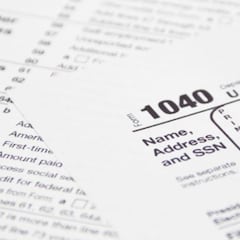Tax season 2023: What is the standard deduction for people over 65?
The IRS upped the standard deduction thresholds for the 2022 tax year to help filers after a year of high inflation.


The standard deduction is a central part of the tax-filing process for anyone in the middle of submitting their returns. The IRS allows a certain amount of income to be considered tax-free and so reduce the filer’s tax bill.
In short, the standard deduction is a specific amount that is subtracted from your total taxable income to reduce your tax liability. Each year the tax agency adjusts those limits, but some groups get a bigger-than-average standard deduction amount.
Anyone aged 65 or older at the end of the tax year is able to claim an additional standard deduction which for 2023 is $1,500. If you are 65 or older and file as a single filer or unmarried head of a household, the additional standard deduction is upped to $1,850.
When it comes to filing your taxes, one of the first big decisions to make is whether you’ll be taking the standard deduction. Here's what you should know. https://t.co/Wdx8Xeienj
— The Wall Street Journal (@WSJ) February 28, 2023
What are the standard deduction amounts for 2023?
After rampant inflation pushed up prices for consumers in 2022 the IRS implemented a series of adjustments to the taxation system to ensure that the rises were taken into account. Tax bracket thresholds were increased, Social Security payments were upped, and the standard deduction was made larger too.
Here’s how that looks for the 2022 tax year…
Single - $13,850
Married, filing separately - $13,850
Married, filing jointly; qualified widow/er - $27,700
Head of household - $20,800
- Requirements to receive up to $2,000 for the Savers Tax Credit
- Head of household vs single: What’s the difference?
- What is the difference between a tax deduction and a tax credit?
Related stories
For those over the age of 65, the additional standard deduction can increase your tax-free entitlement by more than 10% and could save you hundreds of dollars on your tax bill. Note that the standard deduction amount is subtracted from your taxable income, not from your final tax bill.
In addition to the over 65s, taxpayers who are registered blind can also claim the additional standard deduction regardless of their age. Filers for are both over the age of 65 and registered blind, the standard deduction amount is doubled.

